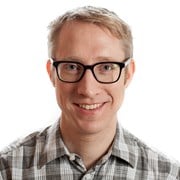A novel class of nanoceramics recently discovered exhibits true solid-state proton conduction at ambient and moderately elevated temperatures. The project has forwarded a model that explains and in fact predicts the presence and transport of protons in external and internal interfaces. This immediately lends itself to explore and improve this novel class of materials and thus develop a new class of fuel cells and other devices for hydrogen, operating at temperatures attractive for transportation and mobile applications.
The project aims to determine firmly the structures, species, and hydration thermodynamics as well as proton transport mechanisms involved in the interfaces of the known nanoceramics. Then the understanding will be applied to improve the conductivity by designing novel materials, compositions, and morphologies.
Finally, the achievements will be demonstrated in laboratory-scale hydrogen fuel cells. If promising, follow-up applications and commercialisation with SMEs as well as alternative uses will be evaluated. The research will comprise electrochemical impedance spectroscopy and thermal methods to determine transport parameters and thermodynamics. DFT simulations will be combined with spectroscopic techniques (solid-state NMR, Raman, XPS, a.o.) in the UiO-SINTEF AnSpec Gemini centre for surface and interface proton characterisation. SINTEF will develop environment-friendly fabrication of the new nanoceramics. Thin film manufacturing techniques (e.g. PLD) will be applied for the demo fuel cells. The project educates a PhD candidate in materials science in a UiO-SINTEF collaborative effort, with exchange and interaction with leading groups in France, Germany, Japan, and USA.
Objectives
To understand and demonstrate principle of novel type of hydrogen fuel cell operating at near-ambient temperatures based on new class of nanoceramic solid state proton conductors.
- Understand solid-state proton conduction in the grain boundaries of nanocompacts and its connection with proposed defect structure involving cation vacancies and protons and their complexes;
- Take into use national advanced spectroscopic and microscopic instrumentation facilities, use understanding of the materials to develop improved materials, compositions, and microstructures;
- Fabricate nanoceramic electrolyte films on electrode substrates for increased performance;
- Establish proof of concept of hydrogen fuel cells based on the new materials class and lay ground for applied projects;- Develop environment-friendly scalable fabrication routes of powders and films of nanoceramic solid electrolytes;
- Educate one PhD within computational, experimental, and applied materials science and research
Financing
The project is funded through the Research Council of Norway's RENERGI programme.
Cooperation
The NaProCs project is a cooperation between the University of Oslo and SINTEF.

